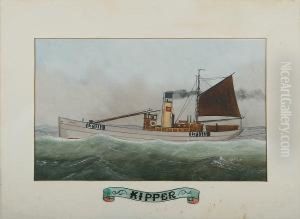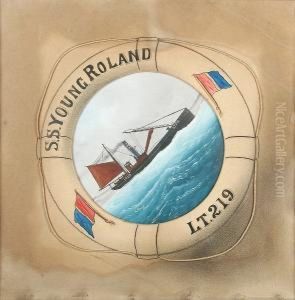Arthur George Racey Paintings
Arthur George Racey was a distinguished Canadian illustrator and cartoonist, born in 1870. He gained significant recognition for his work during the late 19th and early 20th centuries, a period marked by the flourishing of print media. Racey's illustrations and cartoons were characterized by their detailed and lifelike representation, often reflecting the social and political landscapes of his time.
Racey was born in Montreal, Quebec, into a family with an artistic background that encouraged his talents from a young age. He pursued his passion for art through formal education, studying at the Art Association of Montreal under the tutelage of renowned artists of the era. His early career saw him contributing to various local publications, where his work quickly gained popularity for its wit and the precision of its execution.
Throughout his career, Arthur George Racey became best known for his contributions to the 'Montreal Daily Star', one of Canada's most prominent newspapers at the time. His illustrations and editorial cartoons captured the essence of daily life, politics, and societal changes, making him a household name. Racey's ability to encapsulate the Canadian identity and spirit through his art made his work not only popular but also historically significant.
Racey's influence extended beyond his newspaper illustrations. He was also a prolific creator of comic strips, which were among the early examples of the genre in Canadian media. His work in this area showcased his versatility as an artist and his ability to engage with a wide audience through humor and satire.
Arthur George Racey's legacy lives on through his contributions to Canadian art and culture. His work remains an important part of Canada's artistic heritage, reflecting the country's history and societal norms of his time. Racey passed away in 1941, but his art continues to be celebrated for its historical value and its insight into the Canadian way of life during the early 20th century.

